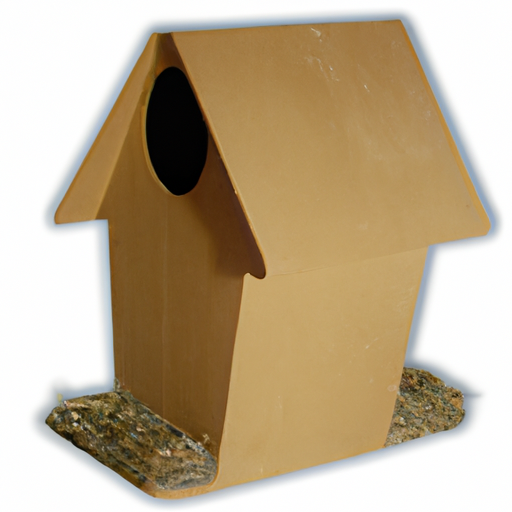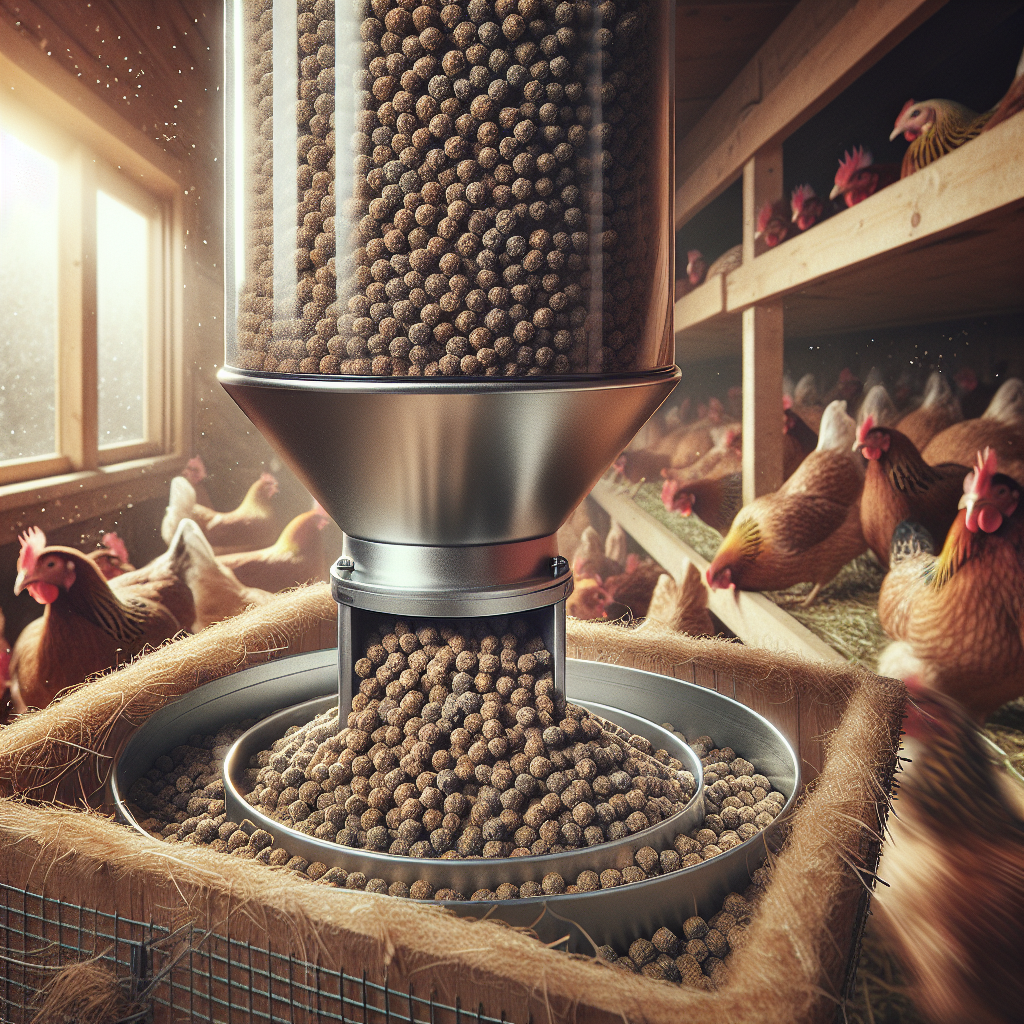In order to maximize egg production, it is crucial to carefully consider the features incorporated into the design of a coop. A well-thought-out coop design ensures that hens are provided with the ideal environment and amenities that contribute to their comfort and laying habits. From the size and placement of nesting boxes to the availability of natural light and ventilation, each aspect plays a significant role in enhancing the productivity of egg-laying hens. By understanding and implementing these key features, you can create a coop that not only provides a safe and secure habitat for your flock but also encourages a consistent and abundant supply of fresh eggs.
Size of the Coop
When designing a chicken coop, it’s crucial to consider the size of the coop in relation to the number of hens you plan to keep. Providing adequate space is vital for the health and well-being of your flock. The general rule of thumb is to allow a minimum of 2 to 4 square feet per hen inside the coop. This ensures that each hen has sufficient room to move around comfortably, stretch their wings, and engage in natural behaviors. It’s important not to overcrowd the coop, as crowded conditions can lead to stress, which in turn can have a negative impact on egg production.
Maximum Number of Hens per Square Foot
It’s also important to consider the maximum number of hens per square foot when designing your coop layout. While the minimum space requirements per hen are essential, allowing for extra space can further optimize egg laying. Providing more square footage per hen allows for a lower-stress environment, reduces the likelihood of aggression, and promotes better overall health and productivity. Consider allowing up to 6 to 8 square feet per hen to create an optimal environment for egg laying.
Roosting Space per Hen
In addition to floor space, adequate roosting space should be provided for your hens. Chickens naturally roost at night, seeking elevated spots to perch and rest. Each hen should have around 8 to 10 inches of roosting space. This will ensure that they can comfortably rest without feeling cramped or unstable. Providing enough roosting space promotes restful sleep and helps maintain the overall well-being and egg production of your hens.
Layout of the Coop
The layout of your chicken coop plays a significant role in maximizing egg laying. Consider the arrangement of nesting boxes, accessibility to feed and water, as well as the ventilation system to create an efficient and convenient environment for your hens.
Nesting Boxes Placement
When it comes to nesting boxes, proper placement is crucial for encouraging egg laying in a designated area. Nesting boxes should be placed in a peaceful and quiet section of the coop, away from high-traffic areas and potential distractions. Most hens prefer dark and private spaces for laying eggs, as it mimics the conditions they would seek in a natural environment. By providing suitable nesting boxes and placing them in an ideal location, you can encourage your hens to lay their eggs where you want them to, making egg collection easier.
Accessibility to Feed and Water
Easy access to feed and water is essential in maintaining optimal egg production. Make sure to place the feeders and waterers in areas that are easily accessible to your hens, promoting regular feed intake and hydration. Avoid placing them near nesting boxes to prevent contamination and encourage cleanliness. Additionally, consider the height of the feeders and waterers for easy reach and use by your hens. Providing convenient access to their essential needs will ensure your hens stay healthy, content, and productive.
Ventilation
Proper ventilation is crucial in a chicken coop to ensure a healthy and comfortable environment for your hens. Good air circulation helps control humidity levels, prevents the buildup of harmful gases, and reduces the risk of respiratory issues. When designing your coop, include windows, vents, or other ventilation mechanisms to allow for the exchange of fresh air. However, it’s important to strike a balance and ensure that drafts and strong winds are avoided, as these can cause stress and negatively impact egg production. Proper ventilation will contribute to the overall well-being and productivity of your flock.
Lighting
Lighting plays a vital role in regulating the egg-laying cycle of chickens. Both natural light sources and artificial lighting can be used strategically to optimize egg production.
Natural Light Sources
Whenever possible, provide access to natural light inside the chicken coop. Natural light helps regulate the circadian rhythm of the hens, which influences their egg-laying patterns. Exposure to natural light stimulates the release of hormones that contribute to egg production. Ensure that the coop has windows or skylights to allow for natural daylight to enter the coop during the day. However, be mindful of providing proper shades or coverings to prevent excessive direct sunlight, which can cause heat stress in the coop.
Artificial Lighting
Artificial lighting can be used to supplement natural light and help maintain consistent day-length conditions for your hens. By appropriately adjusting the duration and intensity of artificial lighting, you can encourage consistent egg production throughout the year, regardless of seasonal variations. Consult with a poultry expert or veterinarian to determine the recommended lighting program for your specific flock. Remember, it’s important to provide a balance between light and darkness to promote natural resting and egg-laying cycles.
Security
Ensuring the security of your chicken coop is essential in protecting your flock from potential predators as well as promoting a sense of safety and well-being.
Predator-proofing
Predator-proofing your coop is crucial to safeguard your hens from potential harm. Consider installing sturdy fencing with small enough gaps to prevent predator entry. Reinforce any potential weak spots, such as doorways or ventilation openings, with heavy-duty mesh or wire. Digging aprons or burying hardware cloth along the perimeter of the coop can prevent predators from tunneling under the fencing. Additionally, provide secure latches and locks for all doors to prevent unauthorized entry and minimize the risk of predator attacks.
Secure Entry and Exit
Creating secure and controlled access points for you and your hens is essential. Ensure that all entry and exit points, such as doors or hatches, are easily operable for you but secure enough to prevent accidental openings by predators. Consider using locks or latches that can only be opened from the inside to minimize the risk of unwanted entry during nighttime or unattended periods. Creating a safe and controlled environment will provide peace of mind and protect your flock from harm.
Temperature Control
Maintaining suitable temperature conditions inside the coop is crucial for the well-being and egg production of your hens, especially in extreme weather conditions.
Insulation
Insulating the chicken coop can help regulate the interior temperature and provide thermal protection to your hens. Proper insulation helps to retain heat during colder seasons and prevents excessive heat during hot weather. Consider insulating the walls, flooring, and roof of your coop using materials like foam or fiberglass. Ensure proper ventilation is still maintained, as insulation alone may trap moisture or impede airflow. Adequate insulation will help create a comfortable and stable temperature environment for your hens, promoting optimal egg production year-round.
Heating and Cooling Systems
In regions with extreme temperatures, it may be necessary to incorporate heating or cooling systems into your coop design. A heating system can help maintain warmth during colder months, preventing frostbite and maintaining egg production. Cooling systems, such as fans or misters, can help lower the temperature during hot weather, reducing heat stress on your hens. Consult an HVAC professional or a qualified poultry expert to determine the most suitable and safe heating or cooling options for your specific coop design and climate.
Nesting Boxes
Nesting boxes provide a safe and comfortable area for your hens to lay their eggs. Consider the size and materials of the nesting boxes to ensure they meet the needs of your flock.
Adequate Size
The size of the nesting boxes is crucial to allow your hens to lay their eggs comfortably. Each nesting box should be spacious enough for a hen to enter, turn around, and settle in comfortably. The recommended size for each nesting box is approximately 12 by 12 inches. Providing ample size will ensure that your hens can lay eggs in a relaxed manner, reducing stress and potential egg breakage.
Suitable Materials
When selecting materials for your nesting boxes, choose options that are easy to clean, comfortable for your hens, and promote hygiene. Smooth and non-porous materials, such as plastic or metal, are preferable, as they can be easily wiped clean and are less likely to harbor bacteria. Avoid using materials that may splinter or absorb moisture, as they can lead to unsanitary conditions and increased risk of disease. By providing suitable materials, you create a welcoming and hygienic environment for your hens to lay their eggs.
Roosting Bars
Roosting bars are essential for chickens to sleep comfortably and maintain their balance. Proper height, width, and materials should be considered when designing the roosting bars.
Proper Height and Width
Roosting bars should be placed at an appropriate height to allow your hens to comfortably jump up and perch. A height of around 18 inches is ideal, as it helps prevent injuries from jumping down. The width of the roosting bars should be around 2 to 3 inches to provide a secure grip for your hens. Offering adequate height and width will ensure that your hens can rest and sleep without discomfort, promoting their overall well-being and egg production.
Suitable Material
Choose materials for your roosting bars that are smooth, comfortable, and easy to clean. Avoid materials like rough-cut wood that can harbor bacteria or splinter, potentially injuring your hens’ feet. Smooth, durable materials like metal or plastic provide a safe and hygienic surface for your hens to roost. By selecting suitable materials, you create a comfortable and secure resting area for your hens, which contributes to their overall health and productivity.
Flooring
The flooring of your chicken coop should be designed with ease of cleaning and safety in mind. Consider non-slip surfaces and materials that promote cleanliness.
Ease of Cleaning
Choosing flooring materials that are easy to clean is essential for maintaining a hygienic coop environment. Smooth and non-porous materials, such as concrete, linoleum, or plastic, can be easily swept or hosed down, preventing the buildup of dirt, debris, or bacteria. Avoid using materials like dirt or sand, which can harbor pests or become muddy during wet weather. By prioritizing ease of cleaning, you can ensure a clean and sanitary environment for your hens, minimizing the risk of disease and promoting optimal egg production.
Non-slip Surface
Incorporating a non-slip surface on the coop floor is important for the safety and well-being of your hens. Provide a flooring material that offers traction and prevents slipping, especially in wet or icy conditions. This will reduce the risk of injury to your hens, ensuring they can move about comfortably and safely. Rubber mats or poultry-specific non-slip coatings are good options to consider. By prioritizing a non-slip surface, you create a secure and comfortable space for your hens to walk and rest, contributing to their overall health and egg production.
Feeders and Waterers
Properly designed feeders and waterers are essential for promoting easy access to food and water, as well as preventing contamination.
Easy Access for Hens
Ensure that the design and placement of feeders and waterers allow for easy access by your hens. Consider using hanging feeders and waterers that can be easily reached at the hen’s chest height, avoiding unnecessary strain or discomfort. This will encourage regular feeding and adequate hydration, promoting overall health and egg production. Regularly check and adjust the height and position of the feeders and waterers to maintain accessibility as your hens grow.
Prevention of Contamination
Maintaining clean feed and water is crucial for the health and productivity of your hens. Choose feeders and waterers that minimize spillage and prevent contamination. Opt for designs that provide protection against droppings, dirt, or other contaminants that can lead to bacterial growth or disease. Regularly clean and sanitize the feeders and waterers to ensure they remain hygienic. By prioritizing prevention of contamination, you create a healthy and safe environment for your hens, maximizing their egg production potential.
Fencing and Outdoor Space
Creating a secure outdoor space for your hens is important to allow for exercise, grazing, and exposure to natural elements while ensuring their safety.
Secure Fencing
A strong and secure fence around the outdoor space is vital to protect your hens from predators and prevent them from escaping. Choose heavy-duty wire or mesh fencing with small enough gaps to prevent predators from entering and ensure your hens cannot squeeze through or fly over. Regularly inspect and maintain the integrity of the fencing to avoid potential weaknesses or damage that could compromise the safety of your flock. A secure outdoor space allows your hens to engage in natural behaviors, such as scratching and foraging, while enjoying fresh air and sunlight.
Sufficient Outdoor Space
Providing ample outdoor space for your hens is important to promote their well-being and encourage natural behaviors. The amount of outdoor space required depends on the number of hens you have and their breed. As a general guideline, allowing a minimum of 10 square feet per hen is recommended. However, providing additional space is always beneficial, as it allows for better exercise, reduces stress, and prevents overcrowding. Ensure that the outdoor space includes areas with shade, dust bathing spots, and access to fresh water. A sufficient outdoor space will contribute to the overall health and happiness of your hens, ultimately optimizing their egg-laying potential.
In conclusion, designing a chicken coop with the right features and elements is essential to optimize egg laying. Consider the size of the coop, provide adequate roosting and nesting space, ensure accessibility to feed and water, prioritize ventilation and lighting, invest in security measures, regulate temperature, and choose suitable materials for various components. By carefully planning and implementing these features, you create an environment that meets the natural needs of your hens, promotes their well-being, and maximizes their egg-laying potential. Remember to consult with experts or reference professional resources for specific recommendations based on your unique circumstances and flock requirements. Building a coop with these considerations in mind will set the stage for happy, healthy hens and a bountiful supply of fresh eggs.




